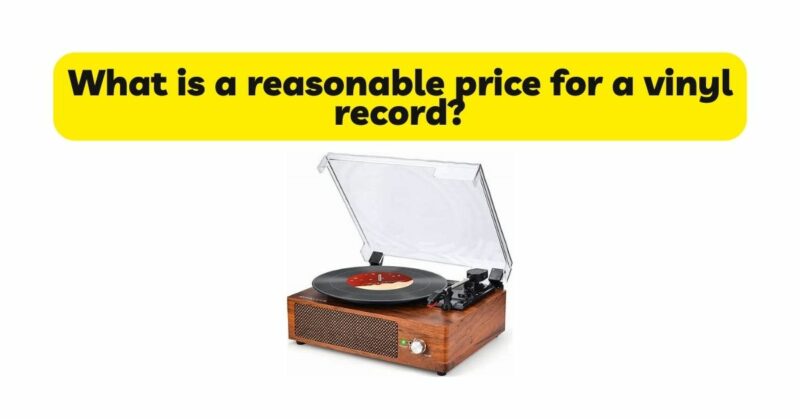In the world of vinyl records, pricing can vary significantly, making it challenging for collectors and enthusiasts to determine a reasonable value for a particular record. While factors such as rarity, condition, and demand play crucial roles in determining prices, there are several considerations that can help establish a reasonable price range for vinyl records. This article aims to explore these factors and provide guidance on determining a fair and reasonable price for buying or selling vinyl records.
Market Value and Trends: One of the primary factors in establishing a reasonable price for a vinyl record is assessing its market value. Market value is influenced by factors such as supply and demand, current trends, and the perceived desirability of the record. Researching recent sales data, consulting online marketplaces, and engaging with collector communities can provide insights into the current market value for specific records. It is important to note that market values can fluctuate over time, so it is essential to stay updated with the latest trends and sales data.
Condition of the Record: The condition of a vinyl record is a significant factor in determining its price. Records in excellent condition, with minimal wear, scratches, and noise during playback, tend to command higher prices. Conversely, records with significant damage or flaws may be priced lower. Evaluating the condition of a record involves inspecting the vinyl itself, as well as the cover, inserts, and any additional features. It is advisable to be aware of grading systems commonly used by collectors to assess record condition, such as the Goldmine Grading System.
Rarity and Scarcity: The rarity and scarcity of a vinyl record can greatly impact its price. Records that were released in limited quantities or are difficult to find tend to have higher price tags due to their exclusivity. Records from niche genres, obscure artists, or small independent labels often fall into this category. It is important to research the availability and production history of a record to understand its rarity and gauge its price accordingly. Additionally, records that were released during specific time periods or in specific regions may also be considered more valuable due to their scarcity.
Editions and Special Features: Special editions or records with unique features often command higher prices. Limited editions, colored vinyl, picture discs, deluxe packaging, bonus tracks, and additional artwork are examples of features that can increase a record’s value. These editions are often sought after by collectors due to their exclusivity and the added appeal they bring to a collection. When determining a reasonable price for a record with special features, it is important to consider the demand for those specific editions and their rarity.
Discography and Artist Significance: The significance of the artist and the record within their discography can influence the price of a vinyl record. Albums from iconic artists or bands, particularly those considered groundbreaking or influential, often have higher market values. The cultural impact, historical relevance, and critical acclaim associated with certain albums contribute to their desirability among collectors, which can result in higher prices. Understanding the artist’s discography and the importance of the record within it can help gauge the reasonableness of a price.
Seller and Buyer Negotiation: Negotiation between the seller and the buyer plays a crucial role in determining a reasonable price for a vinyl record. Prices can vary depending on the individual seller’s motivations and the buyer’s perceived value of the record. It is important to engage in open communication and research similar sales to inform negotiations and arrive at a fair and mutually agreed-upon price. However, it is essential to be mindful of market trends and not overpay or undervalue a record significantly.
Conclusion: Determining a reasonable price for a vinyl record requires considering various factors, including market value, condition, rarity, editions, artist significance, and negotiation between the buyer and seller. By researching recent sales data, assessing the condition of the record, and considering its unique attributes, collectors and enthusiasts can establish a fair and reasonable price range. Additionally, staying informed about market trends and engaging with the vinyl community can provide valuable insights into the pricing dynamics of the vinyl record market.


